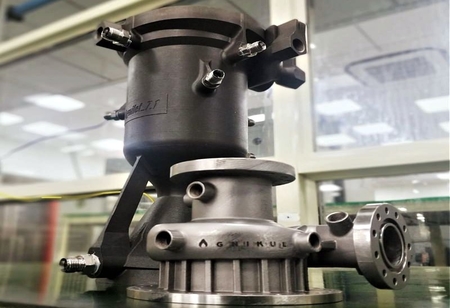
World's first fully 3D printed rocket engine tested by Chennai start-up


Agnikul Cosmos, Indian aerospace startup, has become the world’s first company to successfully test a fully 3D printed rocket engine. The Chennai-based manufacturer is developing India's first private small satellite launch vehicle, Agnibaan. It has successfully fired its higher-stage sei cryogenic engine, calls Agnilet.
The rocket engine is distinctive because it is completely 3D printed as a single component, in one run of the printer. It proves the value of Agnikul's engineering architecture behind its orbital-class vehicle Agnibaan's propulsion system, said the IIT Madras incubated start-up.
Agnibaan, the rocket, will be capable of carrying up to 100Kg of playload to low Earth orbits up to 700 km with a configuration of plug-and-play engine. Entirely, it is one piece of hardware from start to finish and has zero assembled parts.
"We don't think anyone in the world has ever pushed 3D printing of a rocket engine to this extent, and we couldn't be happier to have conceived, designed, realized and test fired this engine fully in India," said Srinath Ravivhandran, CEO and Co-founder of Agnikul Cosmos.
Agnilet was designed differently from other rocket engines. Usually, rocket engines have multiples of pats - injector to inject fuel into the engine; cooling channels to cool the engine; the igniter for the propellants, and so on. But Agnilet can encapsulate all of these into just one piece of hardware. This automates the making of an entire engine, said Ravichandran.
"From Agnikul's operations standpoint, we are relieved that we would not have to track or manufacture numerous parts to realize a rocket engine from now on," said Moin SPm, cofounder and COO of Agnikul Cosmos. " All that remains after printing is bare minimum past processing after which the engine can directly be assembled in our launch vehicle," he added.
Agnikul, founded in 2017, has been testing engines at a smaller scale, or those that were not100 percent additively manufactured, since Sept 2018. This is the first time the company has confirmed the firing of a semi-cryogentic fully 3D printed rocket engine.